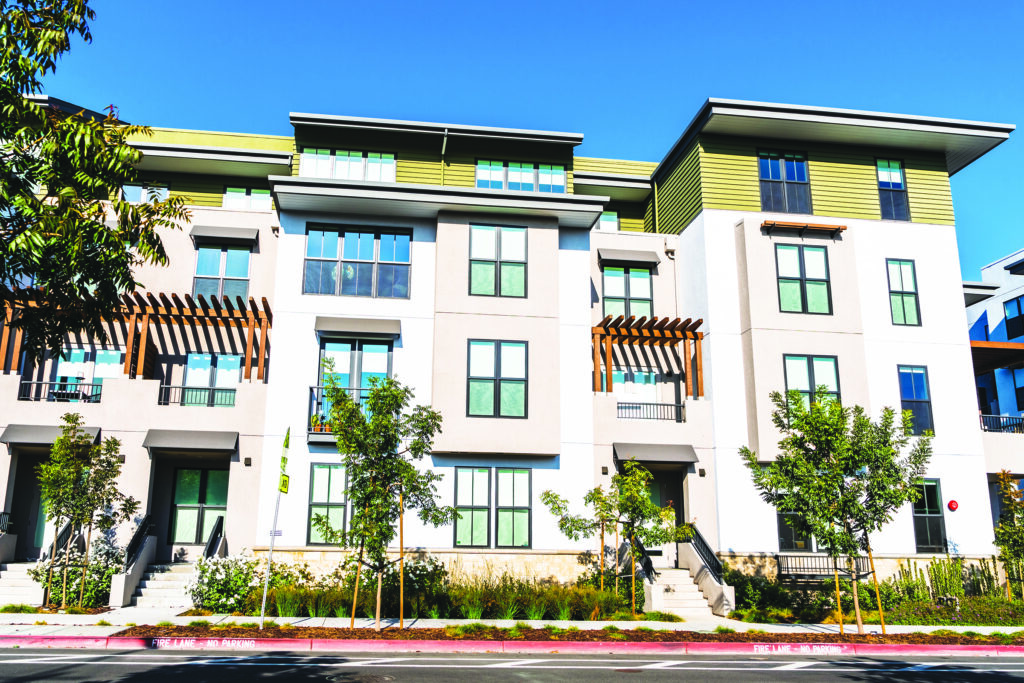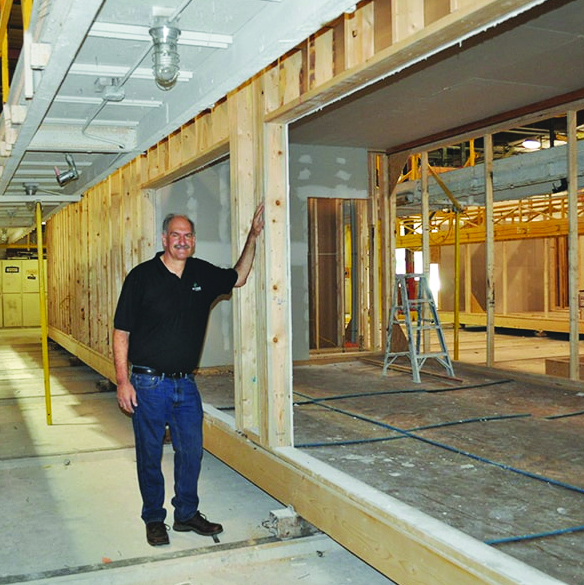Recent articles from ModularHomeSource.com
Ken Semler Wins S.A. Walters Award
Every year, the Building Systems Council (BSC) of the National Association of Homebuilders announces the winner of the S.A. Walters Lifetime Achievement in System Built Housing Award. The award is given to an individual who has done much to further our industry.
This year’s winner is our own Ken Semler, Publisher of Offsite Builder magazine, and President and Founder of Impresa Modular, a nationwide custom home builder that utilizes a network of 25 modular manufacturers around the US. Ken is very active in industry groups and in 2019 was selected by his peers to serve as Chairman of the BSC.
He is also a prolific writer, having published over 200 articles related to offsite modular construction. Offsite Builder magazine was his brainchild. He is a well-known industry speaker and videographer and has a library of videos to help anyone wanting to get into the modular housing industry.
“It is an amazing honor to be recognized by my peers, friends and colleagues with the S.A. Walters Award,” said Ken. “I have so much gratitude that an industry that has given me so much would provide me with this privilege.”
Thank you, Ken, for all that you do for the modular housing industry.

Nine Questions to Ask Before Switching to a New Modular Factory
Are you one of the many builders and developers who will be looking for a new factory in 2023? If so, you need to make sure that the factory you choose to do business with is compatible with your existing business. The days of lowball pricing are over. What you need now are stability and capacity.
Here are the nine key questions you should ask every factory you talk with:
1. What are the payment terms and are they negotiable?
Don’t be afraid to ask what their terms are. The modular housing industry is unique in how payment for the product is made. Cash on delivery, certified check, prepay, assignment of funds and EFT are all common methods.
2. What will my total costs be?
You may have worked with another modular factory for years, but don’t assume that every factory works in the same way. I have seen builders handed invoices after delivery (sometimes adding thousands to the total cost) that they never knew they owed. Talk to the factory’s CFO and nail down final costs and invoice policies.
3. How will you work with their Service and Transportation departments?
Oh boy, this is one area where the gloves can come off. If the factory delivers a product that has defects or missing items, many factory service managers try to minimize their costs by either dragging their feet or simply denying the chargeback. Why? Because their department is a cost to the factory, rather than a profit center. Speak with the service manager and ask the tough questions.
4. Who else is the factory selling to in your area?
You want to find out if they sell directly to the end-user or a competing builder. Note that in a big metropolitan area you may have to accept the latter and expect competition with builders buying from your new factory.
5. What happens if materials are late?
Inevitably, materials will sometimes arrive late at the production line. But what happens then? You want to find out whether your new factory will hold the modules until the materials arrive and complete them in the yard, or will they ship the house to you and then (hopefully) send a service truck to complete the module on-site?
6. Under what circumstances might prices change?
You need to be prepared for the factory to spring price increases on you. Ask them what determines a price change. Is it tied to inflation or an industry index? If prices go up, how much notice will you receive? Conversely, if a supplier’s own costs go down, will your price go down, too?
7. Do you have a volume discount or rebate?
Many factories will offer incentives, so you want to ask about discounts for which you could be eligible. If you agree on a certain purchasing goal and reach it, find out if you can receive a discount or a rebate.
8. How many projects do they anticipate putting on the production line?
Until a few years ago this was not a major concern when shopping for a new factory. Today it’s critical. If the factory has contracted 300 line moves to big projects like multifamily housing, dormitories, or hotels, that could represent half their yearly production and you may not get your home when you thought you would.
9. What is their current backlog?
Some modular home factories don’t have a lot of projects, but their backlog could be four months or more. Many factories that primarily build single-family homes are seeing a sharp rise in production as developers have discovered the many benefits of using modular construction for their communities.

Ongoing Changes in Modular Construction
For as long as anyone can remember, modular factories fell into two distinct groups: those that primarily built single-family homes and townhouses, and those that built multifamily and commercial projects. However the business underwent some big changes from 2008 to 2020, and those changes led to a shift in these groupings.
2008-2020
Before 2008, things were much simpler. Single-family factories didn’t have to contend with building “green and sustainable.” State code reviews and approvals were easy, with some states returning approved plans in as little as two to three days.
Sales reps for both types of factories were ‘road warriors,’ visiting builders in their territories weekly and forging long-term relationships with them. Factories sponsored great trips for their best builders to the Caribbean and other exotic locations. Promises made were kept.
After 2008, things happened that changed modular construction forever. It started with the ’08 housing crash. Demand for new homes tanked and many foreclosed homes became available at fantastic prices. It was a buyer’s bonanza. Factory sales dropped dramatically with more than 60 modular factories, both residential housing and commercial, shutting down. (In fact, two modular factories I had worked for closed their doors.)
Then there were revised International Residential Code (IRC) regulations that tightened up energy requirements and building procedures. Mechanical, electrical and plumbing regs were tightened. States began adopting the latest IRC regs and within a year, getting plan approvals became a nightmare of redlining and back-and-forth corrections resulting in delays of a month or more.
We also saw new regulations for building in flood and storm areas as a result of Superstorm Sandy, which hit the Mid-Atlantic coastline in 2012 and destroyed thousands of homes. The remaining modular factories on the East Coast began to take orders for new homes and production lines began filling up, but those new orders got caught in new regulations. That led to more delays.

On the bright side, Marriott and other hotel chains began switching to modular construction. Because the commercial modular factories could not meet this new demand, many project developers began approaching factories that had traditionally focused on single-family homes.
Unfortunately for single-family builders, those factories began putting large orders from hotel chains at the front of the line. That led many new homebuilders to throw factory loyalty to the side of the road and to begin searching for factories that could build their homes in a timely and predictable manner. Several of these builders switched to on-site building and have yet to return to modular.

The final straw for pre-2008 modular construction was the response to COVID-19. Factory shutdowns, even if just for a short time, created backlogs when those factories re-opened. And like every business, those factories had to contend with fluctuating supply, labor shortages and the rising costs of just about everything that goes into a home.
Together, these changes formed a perfect storm for the entire construction industry, including modular.

What’s Next?
The next big change will be a swing toward the specialization of factories. In addition, automation, robotics, BIM and AI will begin taking their places in the modular factory.
Modular factories will divide into four major types.
Standard. These factories will continue to build standard and semi-custom homes for builders and small developers. They are designed for it and their management has a great understanding of how to make it work efficiently and profitably.
Custom. The second type will be the true custom home modular factory. There aren’t many out there today but look for a few more to open. With the lack of skilled labor available, many custom homebuilders will look to modular to help fill the void, but will still want to offer their customers the same quality and customization they always have. The few modular factories that pick up the custom home gauntlet will find a very profitable niche.
Commercial. The third type will be the traditional commercial modular factory. There are already quite a few in the market, but look for even more to be added with all the hotels, hospitals, affordable housing projects and build-to-rent housing developments about to hit them.
Private. Lastly, we will see the continued emergence of investors and developers buying and building their modular factories to supply their own needs. They understand that they can build products cheaper in the factory.
Rumor has it that several existing East Coast modular factories have already been sold to developers to feed their need for projects, while other formally single-family modular home factories are for sale. Nothing like shaving a year off the building process by buying a currently operating modular factory and converting it to build their cookie-cutter projects.
It remains to be seen where this reorganization of the modular construction industry will ultimately lead, but it’s important to understand that it’s underway.

















